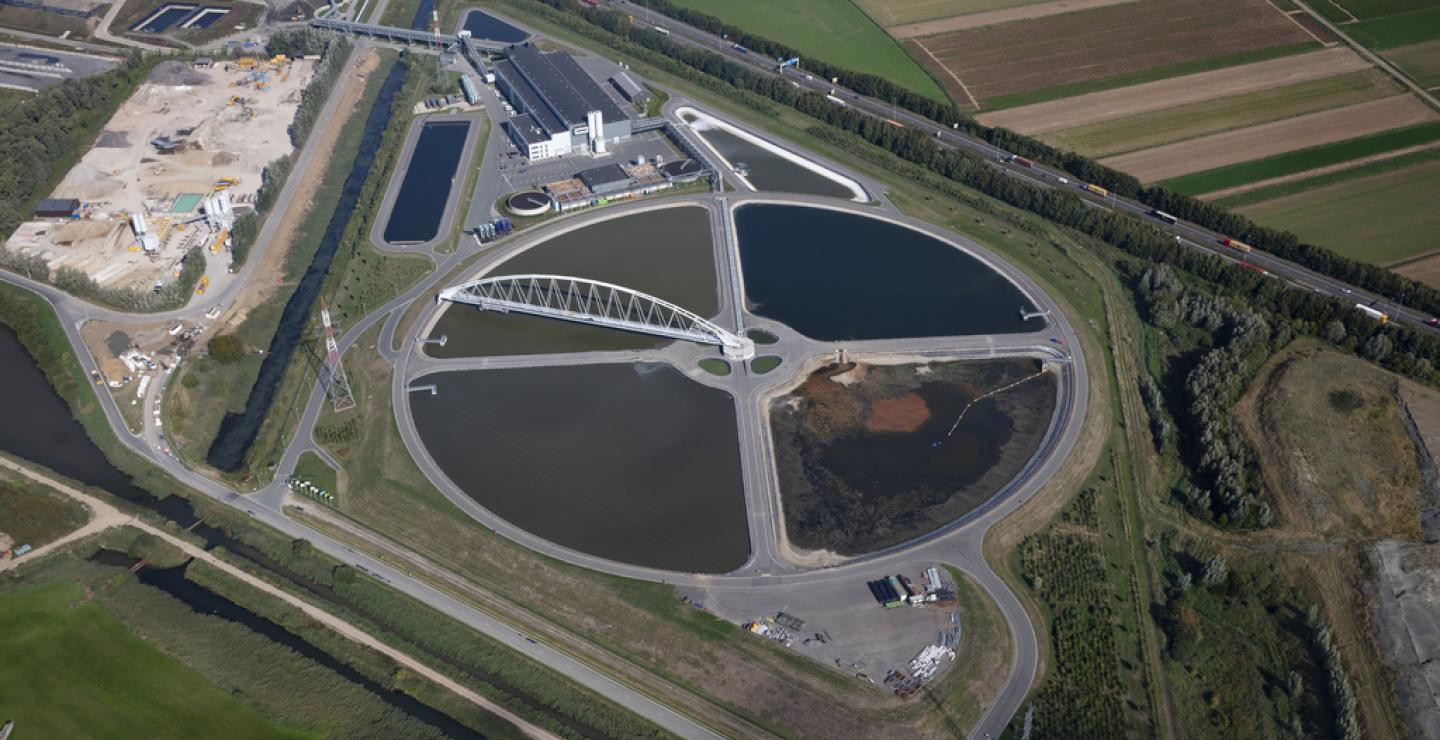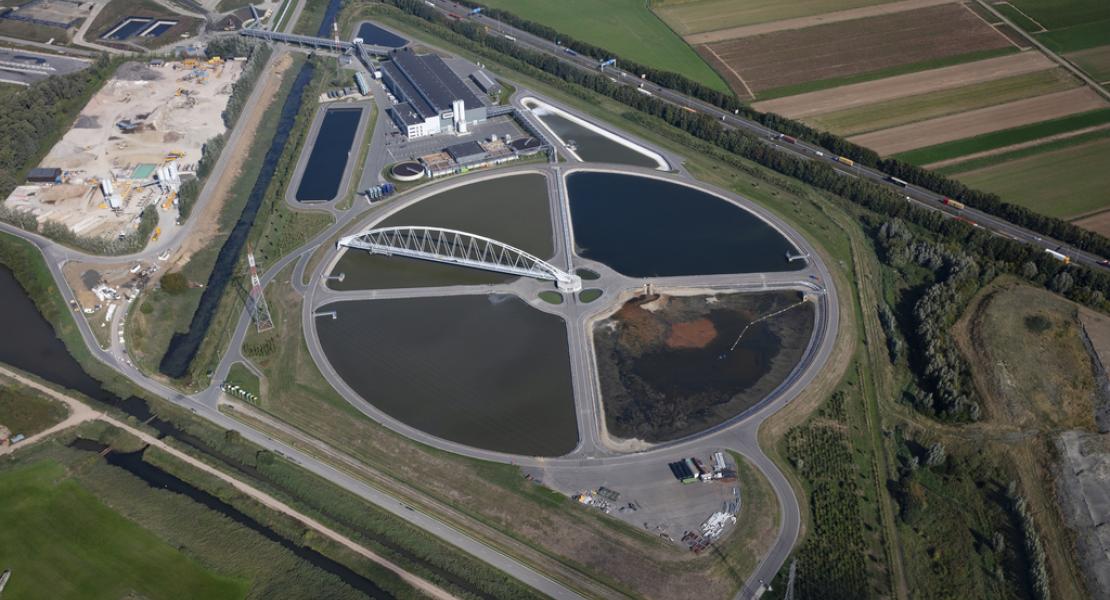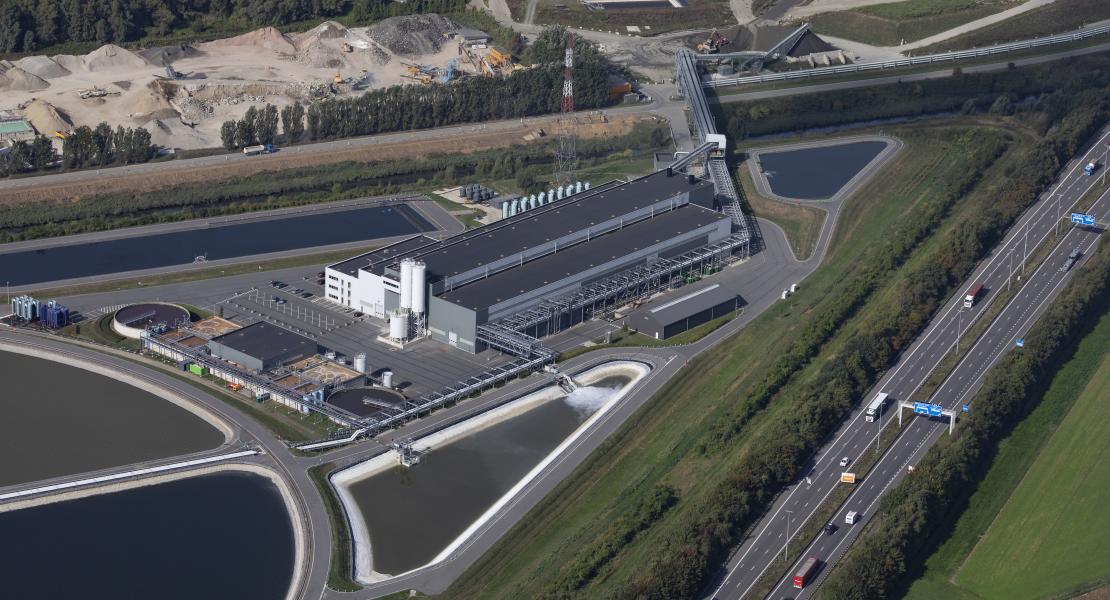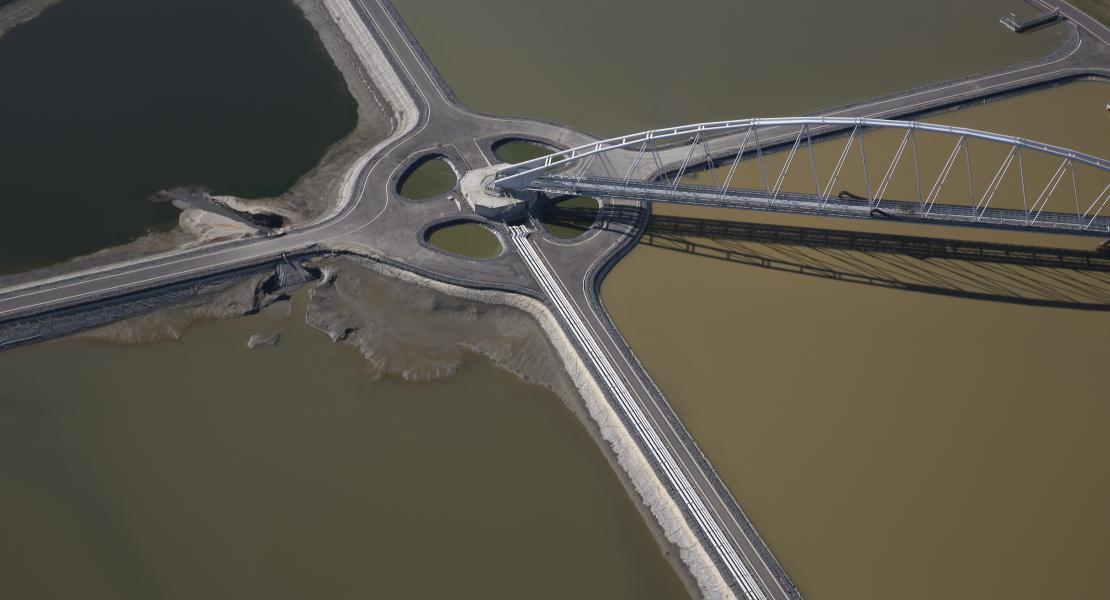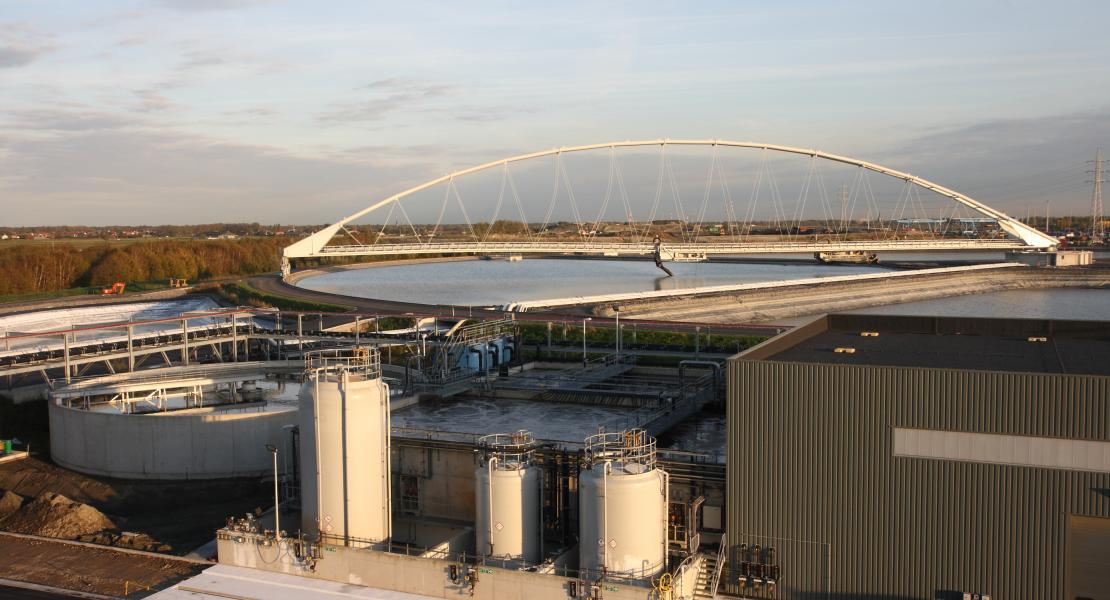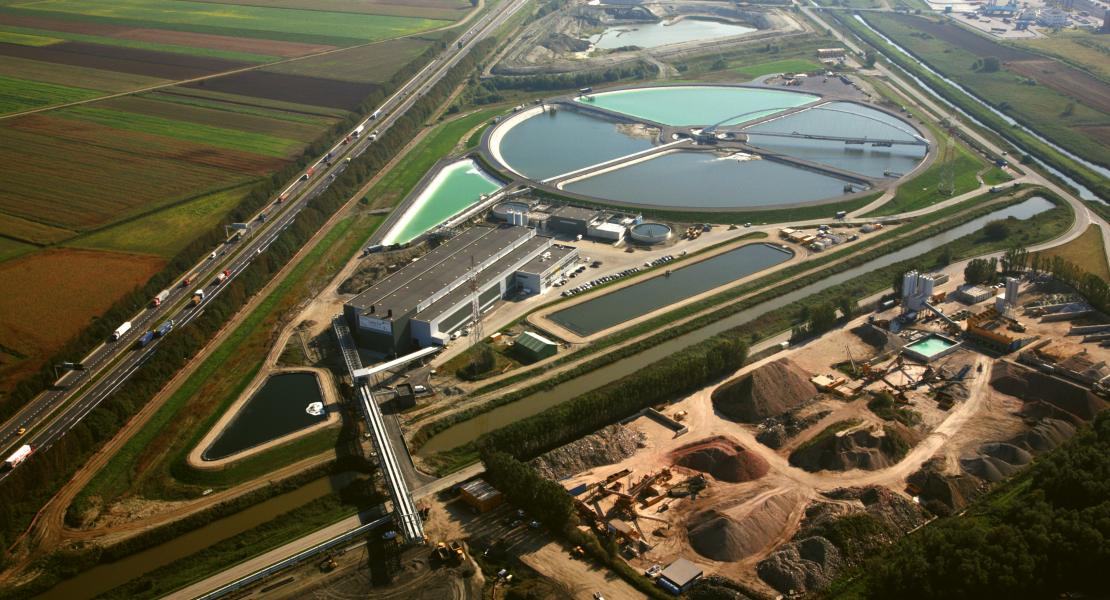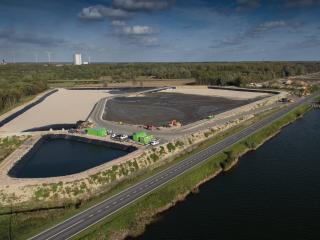Six major steps of the AMORAS project:
Underwater cell
The maintenance dredging material from the harbour docks was temporarily stocked by the Antwerp Port Authority in an underwater cell (with a capacity of 300,000 m³) created in the Canal Dock B1. A dredging unit pumped the dredged spoil to the shore for the treatment process to start. Heavily contaminated spoil was not stocked temporarily but pumped ashore directly using a barge unloading dredger.
Sand separation
The material that had been pumped ashore was diverted to a sieving installation to remove all the coarse elements. Depending on the environmental quality of the material and/or the sand fraction percentage, the decision was taken to de-sand the material in a sand separation plant.
Consolidation and Dredging gantry
Next, the material was pumped by booster pumps through a discharge pipeline to the dewatering plant on the ‘Bietenveld’ site, 4 km away. Here, the material was temporarily deposited in four consolidation ponds, with a capacity of 120,000 m³ each. In the consolidation ponds, the process water required for sieving, de-sanding and pumping the material was separated again. Less contaminated spoil was deposited in three consolidation ponds, whereas more contaminated material went to the fourth pond.
An innovative dredging system with a rotating gantry spanning the consolidation ponds enabled fully automated steering of the process. The dredging gantry is equipped with two mobile dredge pumps that can move along the entire span and that are able to work independently from each other.
Dewatering plant using filter presses
In the dewatering hall (140 m x 25 m) the sediment is collected and kept in suspension by 12 mixing units in a large conditioning tank (2,400 m³). Conditioning is done with either lime or polyelectrolyte to improve the sediment’s dewaterability. Twelve membrane chamber filter presses dewater the material, pressing the water through a filter cloth, at a rate of approximately 10 tonnes of dry material per hour per filter press, with a maximum capacity of 3,000 tonnes of dry material per day (24 h). The resulting filter ‘cakes’, with a dry matter content of at least 60 %, are transported to the deposit site by a series of conveyor belts. Two ventilators, each with a capacity of 120,000 m³/h, extract air from the dewatering hall and blow the air into two acid scrubbers, removing any potential ammonia nuisance.
Water Treatment Plant
The filter process water and other effluent water is gathered in the buffer pond for wastewater and subsequently pumped to a water purification plant. There the particles in suspension are removed through a physico-chemical process. In a second step the organic material and nitrogen is removed by means of biological cleaning.
Deposit site
The controlled deposit of the filter cakes is located on the ‘Zandwinningsput’ site. Here, a stack of filter cakes of over 50 m high can be deposited on top of an existing 10 m layer of medium consolidated silt that was previously deposited there.
